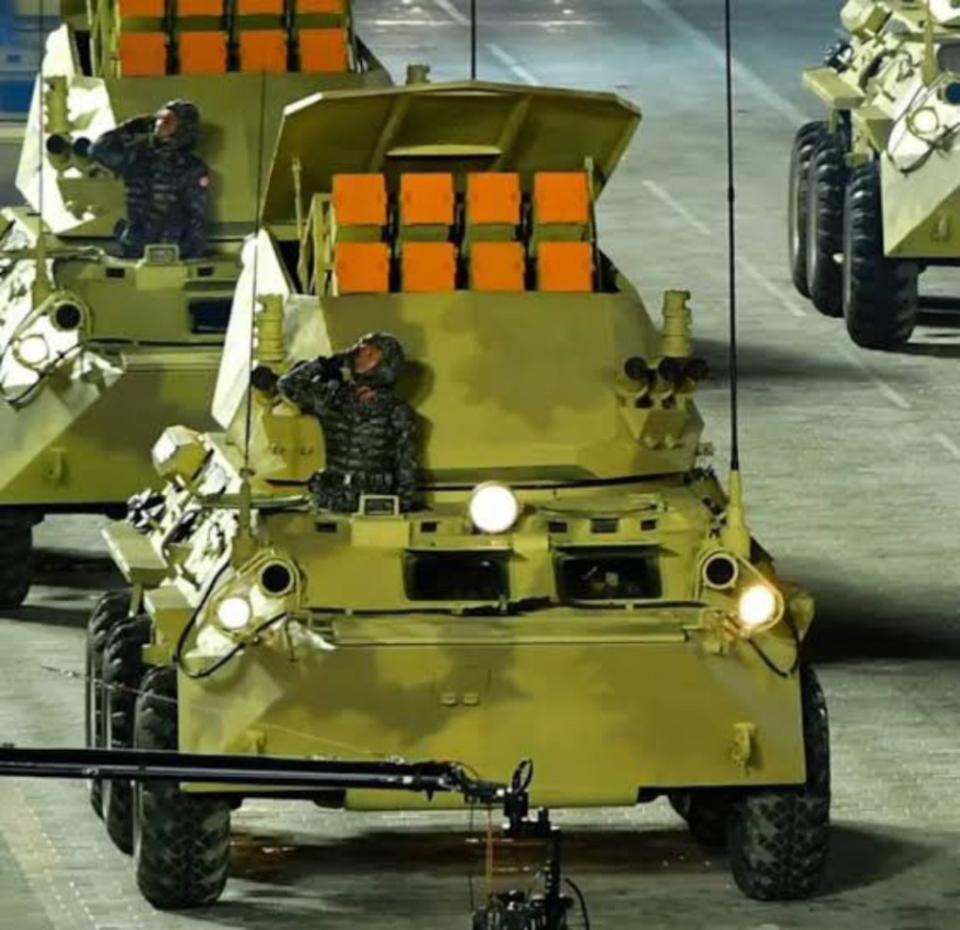North Korean Anti-Tank Missile-Toting Vehicle Appears To Be Operating In Ukraine
In a striking development in the ongoing conflict in Ukraine, reports have emerged indicating that Russia has deployed a North Korean Bulsae-4 M-2018 Non-Line-Of-Sight (NLOS) long-range self-propelled Anti-Tank Guided Missile (ATGM) system. This advanced weaponry was spotted recently by Ukrainian aerial surveillance in the Kharkiv region, situated near the Russian border. The KUP Telegram channel first disseminated images of this vehicle, marking a significant moment in the evolving relationship between North Korea and Russia—one characterized by pragmatism and mutual military support.
Identification of the Bulsae-4
The Bulsae-4 system is mounted on what is believed to be a North Korean M-2010 armored personnel carrier chassis, featuring a rotating turret capable of holding eight missile containers. The design details shared by Ukrainian sources correlate strongly with images of the Bulsae-4 from North Korean state media, underscoring its authenticity. Analysis of the images, particularly the container hatch cover and the spacing between the vehicle’s wheels, further validates these claims.
Enhanced Capabilities in Anti-Armor Warfare
The introduction of the Bulsae-4 adds a formidable new dimension to the Russian military's anti-armor capabilities. This NLOS system operates similarly to Israel's Spike NLOS, enabling operators to launch missiles that can be controlled in-flight. The significance of this feature lies in the missile's ability to lock onto targets after launch, allowing operators to engage targets that are not within direct sight. This flexibility can make it exceedingly difficult for Ukrainian forces to anticipate or counter the threats posed by these missiles.
According to experts, the Bulsae-4 missiles are guided by an electro-optical seeker in conjunction with command guidance facilitated by a fiber optic cable. This connection allows for real-time control, enhancing targeting accuracy, and giving operators the latitude to redirect missiles mid-flight. Ranging beyond 10 kilometers (approximately 6 miles), these missiles can strike from above, targeting the vulnerabilities inherent in armored vehicles.
Tactical Implications and Recent Activity
While the Bulsae-4's deployment in Ukraine is unprecedented, it raises questions regarding its operational history. Recent Ukrainian military analyses have linked the capabilities of these NLOS missiles to prior strikes, including a reported attack on a Ukrainian AS-90 artillery system earlier this year. However, there has been no independent verification confirming these claims.
With the expansion of drone surveillance on both sides of the conflict, the visibility of the Bulsae-4 raises a crucial question: Why has little been seen of this system until now? This lack of documented sightings may indicate that these vehicles were only recently integrated into the Russian military's arsenal, suggesting they could soon play a more prominent role on the battlefield.
Broader Implications of the North Korea-Russia Relationship
The Bulsae-4 system is just the latest in a series of military exchanges between North Korea and Russia. Reports indicate that North Korea has already sent artillery shells and tactical missiles to support the Russian military efforts in Ukraine. Additionally, speculation around the exchange of military technology, particularly ballistic missiles, raises concerns about future developments in both countries’ military capabilities.
Furthermore, emerging reports suggest that North Korean engineering troops may be deployed to Ukraine, potentially aimed at reconstructing occupied areas and assisting Russian troops in their operations. This deepening alliance not only bolsters Russia's military resources but could also have significant ramifications for the geopolitical landscape of the region.
Conclusion
The deployment of the Bulsae-4 missile system in Ukraine underscores a pivotal shift in the dynamics of the conflict—one that reflects the broader geopolitical alignments between North Korea and Russia. As this partnership strengthens, the implications for military strategy and international relations will be profound. Observers and military analysts will be closely monitoring the developments on this front, as the Bulsae-4 and potentially other North Korean weapon systems could redefine the capabilities available to Russian forces on the battlefield.
Contact the author: howard@thewarzone.com



